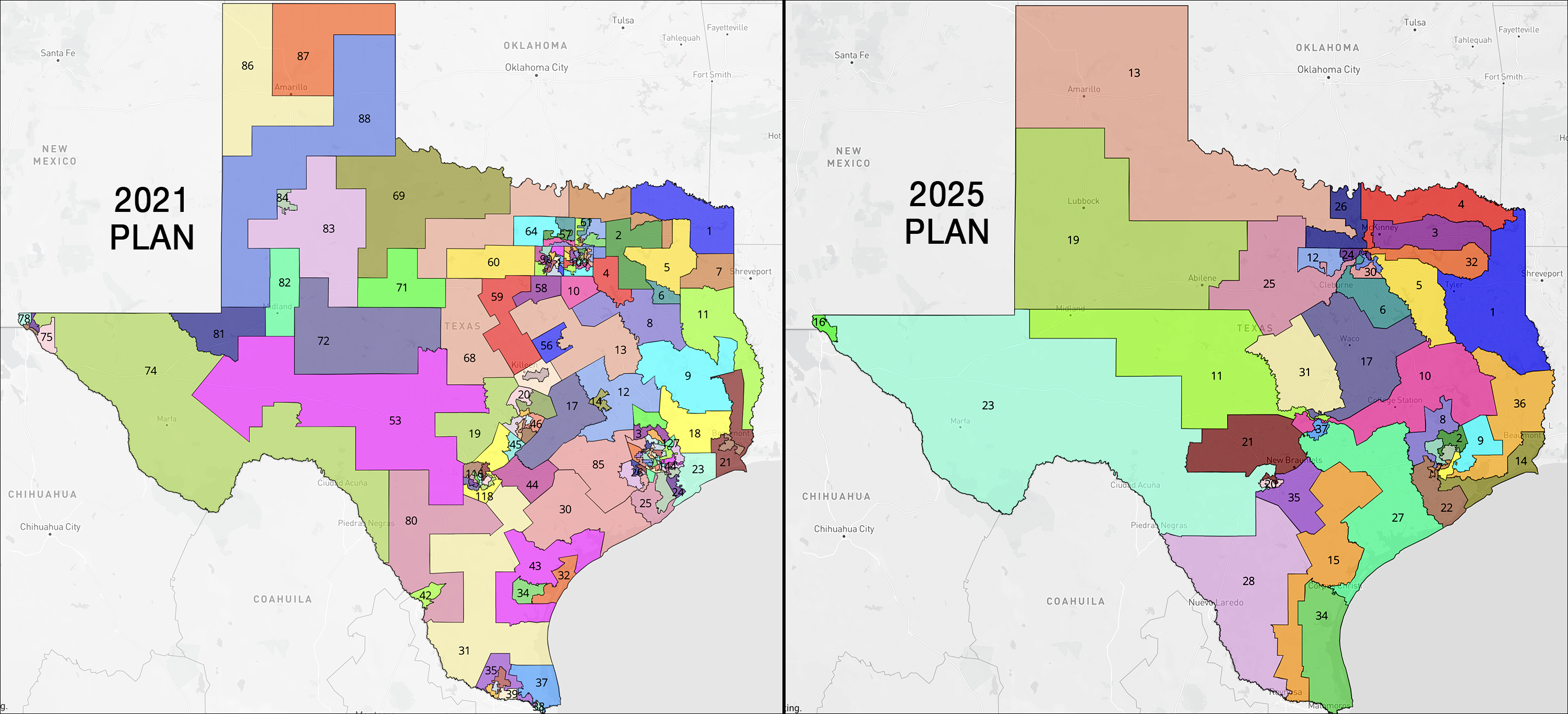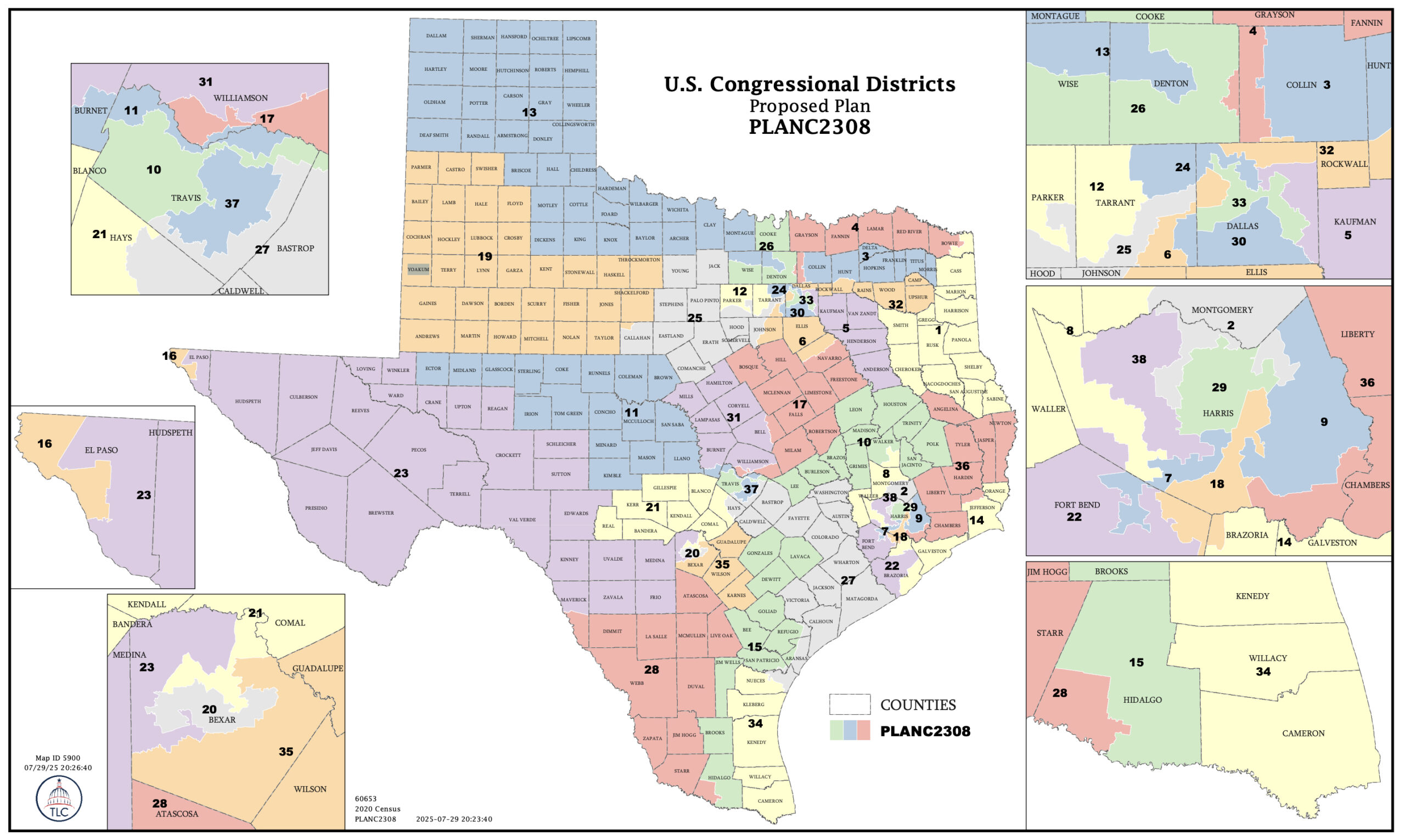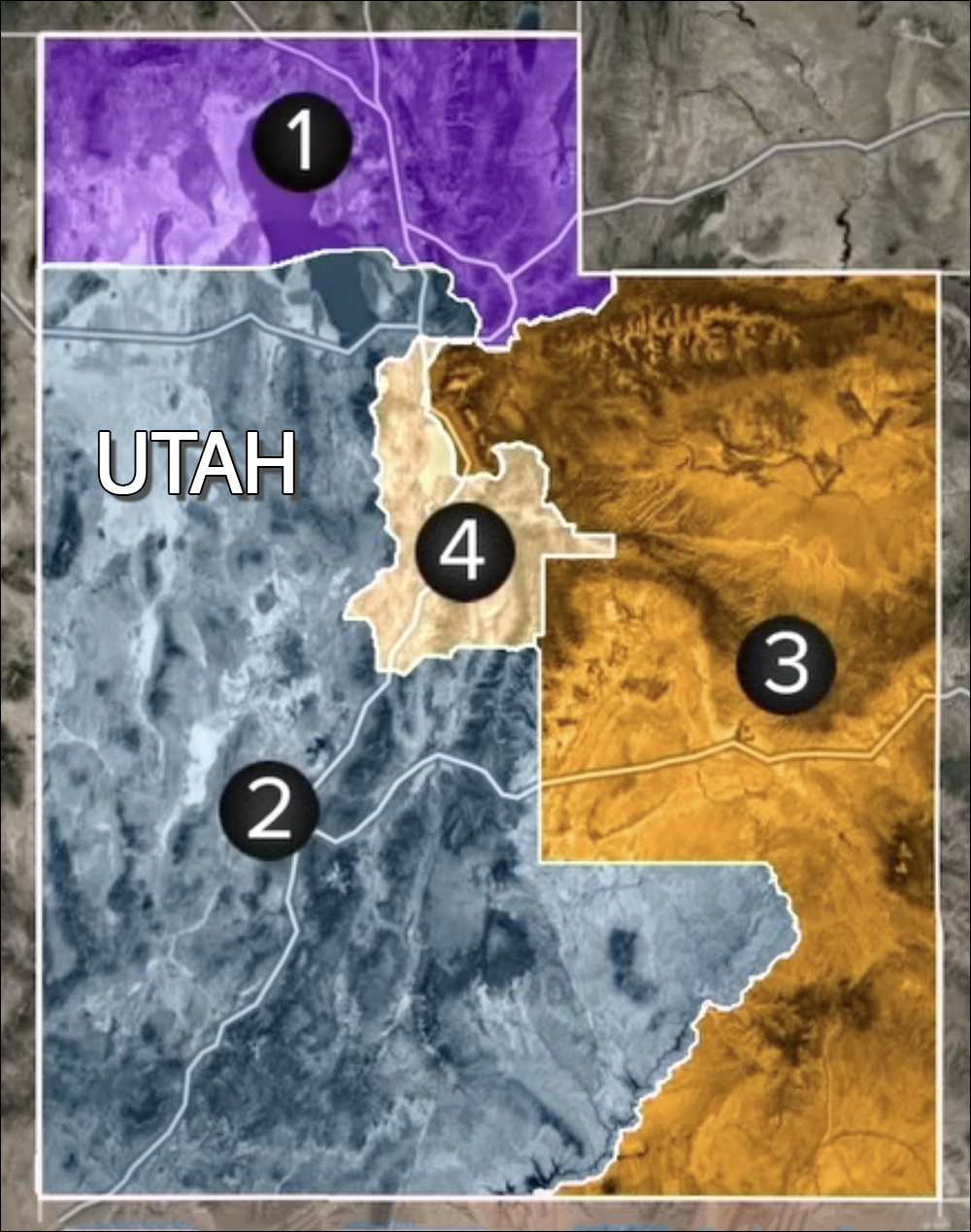By Jim Ellis — Monday, Nov. 24, 2025
New polling data was just released in Texas that confirms what many observers have opined about the Lone Star State’s US Senate campaign, and a scathing dissent from one of the three-judge panel members who heard the latest redistricting case could pave the way for a Supreme Court stay.
Senate
Ragnar Research (Nov. 12-17; 1,000 likely Texas voters; live interview) released a new Texas US Senate poll that supports the common political supposition pertaining to the Lone Star State Senate race. That is, Sen. John Cornyn (R) would lead both 2024 Senate nominee and ex-Congressman Colin Allred (D) and state Rep. James Talarico (D-Austin), but Attorney General Ken Paxton would be in danger of losing the general election.In this poll, Sen. Cornyn leads Allred 47-40 percent and Talarico by a similar 46-40 percent split, both beyond the polling margin of error. As predicted, the two Democrats fare better against Paxton. Allred would lead 44-43 percent, and Rep. Talarico would tie the scandal-tainted AG at 44-44 percent.
The third announced Republican in the race, Rep. Wesley Hunt (R-Houston), was not tested, nor was Rep. Jasmine Crockett (D-Dallas) on the Democratic side. Crockett has been leading in other Texas Democratic statewide primary polls but has not yet made a decision about whether to enter the Senate race.
The latest judicial redistricting ruling from the El Paso three-judge panel suggests Rep. Crockett may stay in the House since the 2025 Texas map invalidation restores her 30th Congressional District to its previous boundaries.
According to Ragnar Research partner Chris Perkins, who conducted this poll, wrote “John Cornyn is the strongest candidate for Republicans in a general election, as he has a clear lead. Paxton is statistically tied with either of the Democrat candidates and jeopardizes the ability of Republicans to hold the seat.”
The Texas Senate race is one of the key focal points of the 2026 election cycle. It will be perhaps the only Senate contest that features a contested primary in both parties along with a highly competitive general election.
Redistricting
Fifth District Circuit Judge Jerry E. Smith, a member of the three-judge panel that invalidated the 2025 Texas redistricting map as a racial gerrymander over his objection, published a scathing dissent to the ruling. In his document, Judge Smith referred to lead Judge Jeffrey Brown’s decision as “the most blatant exercise of judicial activism that I have ever witnessed.” Judge Smith stated that he has been a federal judge for 37 years.
The dissent opinion begins by saying that, “the main winners from Judge Brown’s opinion are George Soros and Gavin Newsom. The obvious losers are the People of Texas and the Rule of Law.”
Throughout a 104-page document, Judge Smith details 11 different examples of how ruling that the 2025 Texas map is a racial gerrymander is either “false, misleading, deeply misleading, or deceptive.”
The state of Texas has already appealed, asking that the current ruling be stayed. Appealing a three-judge panel decision goes directly to the US Supreme Court and an official answer must be rendered. The justice assigned to oversee the 5th Circuit Court of Appeals, in which Texas resides, is Samuel Alito. The justices have the individual power to issue stays on cases from the circuits in which they oversee.
If Justice Alito were to grant a stay on the Brown panel redistricting ruling, the 2025 map would return as the official Texas map. With candidate filing closing on Dec. 8, a quick ruling on the stay motion is imperative since the two maps are radically different in 11 of Texas’ 38 congressional districts.







